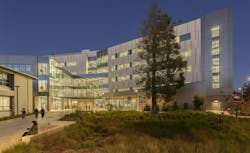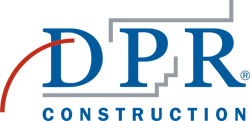By Greg Fraikor, DPR Construction Higher Education Core Market Leader
Higher education looks little like it did 10 years ago. As institutions stay true to their core missions—instruction, research, and service—they are addressing mounting pressures to demonstrate clear return on investment of select programs (or degrees). A myriad of external forces add to the pressure. Federal and state policies, new workforce needs, and rapid advancements in technology are changing pedagogy and the expectations of the “college experience.”
At the same time, the way universities plan for capital construction projects is changing. Institutions already grappling with affordability and campus speech concerns now face new pressures: shifting federal funding, tariffs, and tax code changes—some of which feel like they’re shifting by the week. Even schools with deep endowments must rethink their strategies.
To move projects forward confidently amid uncertainty, colleges and universities can benefit from:
- Collaborative procurement planning
- Self-performing general contractors
- Emerging delivery methods
Together, these approaches can lead to more predictable project outcomes aligned with institutional missions.
Materials Market: From Volatility to Strategy
Every dollar counts. Fluctuations in the materials market due to ever-changing tariffs and supply chain disruptions have led some to question whether it’s the right time to move forward with projects.
After all, tariffs and supply chain disruptions make material costs feel unpredictable. But these challenges aren’t new—just ask anyone who tried sourcing glass in the mid-2010s.
Recent tariff announcements have raised concerns, but it’s important to look at the numbers behind the headlines. For instance, a 25% tariff on Mexican imports might suggest a major drywall cost increase. In reality, as of Q2 2025, DPR estimated the premium at around 3% installed—significant but manageable at that time.
Early collaboration and scenario planning can help. Local alternatives and temporary solutions may offer relief. The key is partnering with design and contracting teams who understand the market and can guide confident decision-making.
Labor Availability: Building Certainty
The skilled labor shortage has grown over two decades, driven by retirements and fewer young workers entering the trades. Without comprehensive immigration reform, the squeeze will continue. Meanwhile, the availability and cost of labor continues to challenge project teams across the industry.
Encouraging signs—like new apprenticeship programs—are emerging, but scaling the workforce will take time.
Choosing a self-performing general contractor offers greater control and reduced risk. These teams manage critical scopes directly, improving coordination, problem-solving, and certainty across quality, safety, cost, and schedule.
For institutions, this means projects are more likely to be delivered on time, ensuring students and staff can use the spaces they’ve planned for.
Project Execution: Modern Methods for Modern Campuses
You’ve spent hours upon hours of time assessing facilities and campus planning. Everything is geared toward building the spaces that will equip students for the careers of tomorrow in leading-edge facilities.
Why build tomorrow’s buildings with yesterday’s methods?
Breaking free of the legacy design-bid-build approach changes how risks are managed but can unlock new efficiencies by enabling new workflows and technologies. Early collaboration among design and contracting partners that leverage robust Virtual Design & Construction allows teams to identify and solve issues early—saving time and money.
Collaborative planning also enables the best uses of off-site prefabrication, offering more control over labor and materials. Contract types like design-build and integrated project delivery may feel like a big shift, but the right partners can guide stakeholders through the transition and demonstrate proven value.
Taking Control
While headlines continue to highlight constant disruption, universities have options to reduce uncertainties presented by changing market forces. With the right planning and partnerships, institutions can take control—ensuring access to materials, labor, and execution strategies that keep projects moving forward.
Sponsored by:



